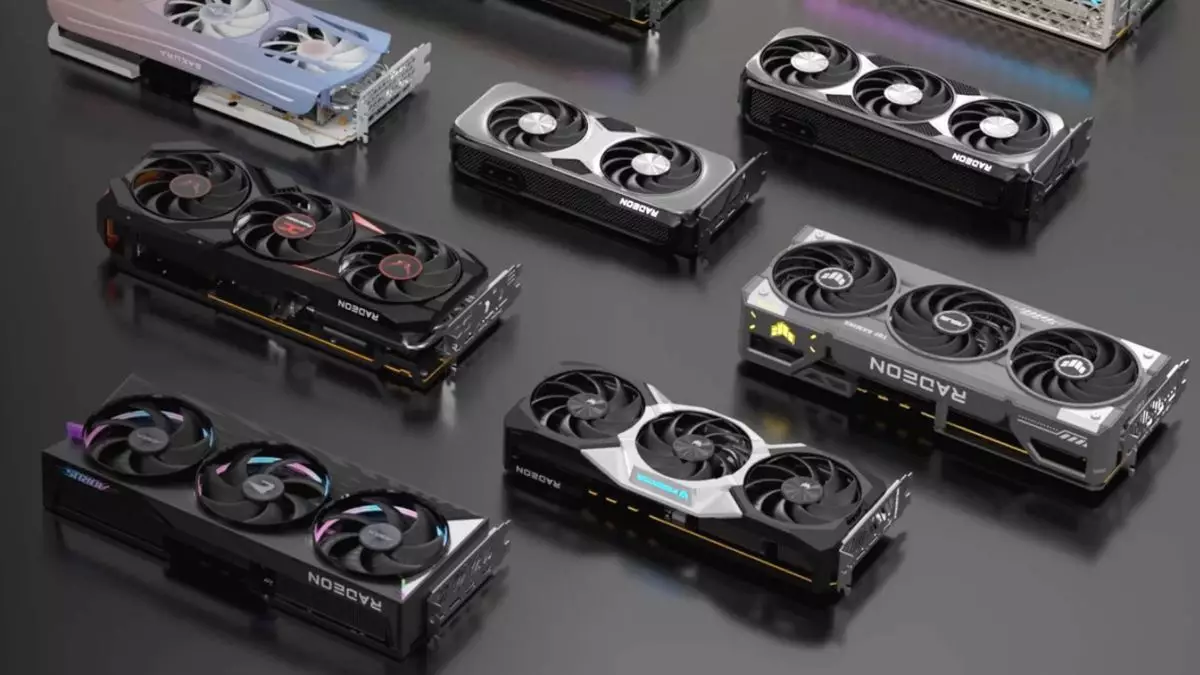The anticipation surrounding the next generation of graphics processing units (GPUs) has reached new heights, especially as Nvidia’s RTX 50-series cards have been flying off the shelves in mere moments. The clamor for new hardware isn’t just a knee-jerk reaction; it reflects the frustrations experienced by gamers grappling with prolonged shortages and escalating prices. AMD’s impending RDNA 4 architecture introduces a wave of excitement but also a heavy burden of expectations, particularly regarding availability and affordability.
AMD recently took to social media to engage with the gaming community, specifically soliciting feedback on what users are most eager to see in the RDNA 4 lineup. One predominant theme echoed throughout the discourse was the critical need for availability. Gamers have expressed profound frustration with the state of current GPU supply chains. This sentiment is hardly surprising; many have felt the anguish of logging onto retail sites only to find that stock is perpetually sold out, sometimes within seconds of becoming available.
In this context, discussing features like ray tracing or upscaling technologies feels almost secondary. Despite the array of bells and whistles that the RDNA 4 might offer, it is clear that a fundamental prerequisite for its success will be whether gamers can actually purchase the cards. Ensuring efficient distribution and stock availability will not only satisfy existing demand but also restore some faith in AMD’s commitment to its consumer base.
Another essential concern that emerged from conversations around RDNA 4 is the pricing strategy that AMD will adopt for its new GPUs. Users have articulated strong preferences for affordable options that do not break the bank. As one respondent poignantly noted, they don’t want to spend more on a GPU than the price of their entire gaming rig from the previous year. This perspective encapsulates the prevailing anxiety about inflation and market fluctuations that have affected consumers across the board.
The launch of the Radeon RX 9070 and RX 9070 XT will be examined not just for performance but also for their pricing relative to their competitors, particularly Nvidia. AMD will need to approach the market with a pricing model that feels justifiable, transparent, and, above all, competitive. A high launch price could spell disaster, even if performance metrics are promising. Gamers will remember previous experiences where high initial prices eventually dropped, leading to negative perceptions that could linger in the public’s mind.
The conversation around features was vividly dominated by the potential for enhanced upscaling technologies. At the forefront is AMD’s FSR 4, which aims to rival Nvidia’s longstanding DLSS. However, it’s essential to recognize that while AMD is poised to make strides in AI-driven upscaling, the competition is ever-evolving—Nvidia has recently made significant improvements to its DLSS with new frameworks that could set a formidable benchmark for Radeon’s offerings.
Interestingly, while discussions around ray tracing did occur, these were not as fervent or widespread compared to the excitement around general performance and upscaling. This points to a shift in prioritization—gamers appear far more interested in getting solid “real” frames per dollar than they are in the potentially gimmicky allure of ray tracing. With light simulation and visual fidelity becoming commonplace, solid raster performance is now viewed as the foundation on which any additional features need to be constructed.
As AMD looks to appease its customer base, it remains entrenched in the arduous task of not simply keeping up with Nvidia’s rapid advancements but also addressing lingering skepticism about its capabilities. The notion of “real frames vs. fake frames” continues to circulate, emphasizing a desire for raw performance that consumers can trust. The online community’s concerns about Nvidia’s controversial features, including Multi Frame Generation, also underscore a broader skepticism toward marketing touting theoretical performance gains without equivalent real-world validation.
AMD’s upcoming launches will be pivotal; they carry the weight of expectation not just for technological prowess, but for establishing its relevance in a market that seems to shift with every new announcement from competitors. The stakes are high—offering a Radeon RX 9070 XT with substantial raster performance at an accessible price point could be precisely what the market demands.
AMD finds itself at a crossroads as it prepares to launch its RDNA 4 architecture amid rising consumer expectations. Availability, pricing, performance, and trust have emerged as the key pillars on which the success of the upcoming GPUs will depend. The time for talk is running out; what remains to be seen is whether AMD can effectively translate consumer hopes into tangible products that satisfy both benchmarks and budgets.

